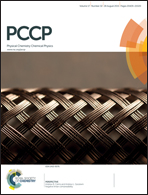Coherent light-driven electron transport through polycyclic aromatic hydrocarbon: laser frequency, field intensity, and polarization angle dependence
Abstract
A laser field is a potential control tool for operating ultrafast electronic devices due to a wide variety of options such as field strength, frequency, and polarization. To investigate these variables upon electron transport through a single-molecule device, we simulate a phenyl-acetylene macrocycle (PAM) within a linear-polarized laser field using single-particle Green's functions combined with the non-Hermitian Floquet theory. In the absence of the laser field, the PAM behaves as a perfect insulator due to destructive quantum interference. In the weak-field regime, field-amplitude power laws for one-, two-, and three-photon assisted tunneling are evident in the computational results. The study reveals a range of experimentally feasible field strengths for the observation of picoampere current caused by photon assisted tunneling. In addition, we find that the light-driven current is proportional to the cosine square of the polarization angle, and molecular electronic structure is revealed by the current-frequency characteristics. The origin of these behaviors is established using non-Hermitian Floquet perturbation analysis. The computations show that PAM-based optoelectronic switches have robust large on–off switching ratios under weak-field operating conditions, which are not sensitive to asymmetric molecule-lead couplings.


 Please wait while we load your content...
Please wait while we load your content...